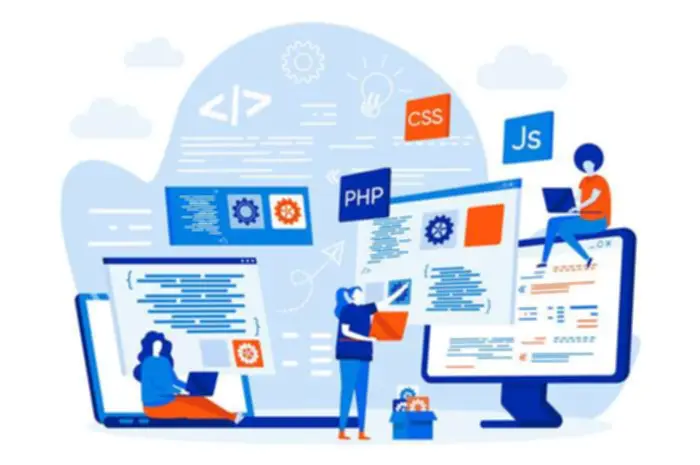Each microservice is a self-contained unit, responsible for SOA vs Microservices a selected enterprise perform, and operates autonomously, speaking with other services through well-defined interfaces. While microservices structure offers many benefits in agility, scalability, and resilience, it also introduces more complexity. It may be difficult to handle a rising ecosystem of microservices throughout diverse infrastructures—especially as groups collaborate and data silos emerge. While SOA and microservices share some goals, there are notable variations. The fundamental architectural type units these two approaches apart when evaluating SOA vs. microservices.
Service-oriented Structure Overview

When you run every service in its personal course of throughout the same server, it is assured that a contract is followed. If all microservices are run inside the same course of, all companies shall be eradicated if the process is resumed. When each service in run in its personal process, it’s ensured that only one service is eradicated in case the method is reinstated but if the server is restarted, it will get rid of all of the services.
What’s A Service-oriented Architecture?

By utilizing these easier, sooner protocols, microservices architectures can achieve extra scalable and responsive functions, accommodating modern consumer expectations and workloads. Current software program improvement more and more depends on distributed, service-based architectural patterns to achieve scalability, reliability, and rapid build, take a look at, and release cycles. Two of the most popular service-based approaches are service-oriented structure (SOA) and microservices. In this text, we will describe the methods these methods are alike and the way they are different. When choosing between SOA and microservices, companies should contemplate factors such as utility complexity, scalability requirements, staff structure, and existing infrastructure. Each architecture has its benefits, and the selection largely is dependent upon the precise needs and goals of the group.
So Which Architectural Fashion Is True On Your Business?
This method permits for a clean transition and leverages the strengths of both architectures. As distributed architectures scale, Compass turns into increasingly useful. It provides a unified platform for managing complexity, ensuring the continued success of microservices-based purposes.
Microservice architecture is usually thought of an evolution of SOA as its services are extra fine-grained, and performance independently of one another. Therefore, if one of many providers fail within an software, the app will proceed to perform since each service has a distinct function. The companies in microservices talk through application programming interfaces (APIs) and are organized round a selected business area.
Each service is impartial and focuses on a specific task or performance. Each microservice also accommodates all the required code and data to operate with out counting on different elements. Microservices communicate through lightweight protocols similar to HTTP and REST, fostering agility and resilience. There are a quantity of points to contemplate when deciding whether or not microservices or SOA is best for a particular enterprise.
While the idea of Service-Oriented Architecture (SOA) is not novel, its fundamental tenets proceed to carry significant relevance in the present panorama of software design. At the fundamental degree, SOA revolves around the creation of software options as a collection of companies that engage in communication with one another. This phase dives deep into the genetic make-up of SOA, scrutinizing its architecture, guiding rules, and operational elements. So, the twain, SOA and Microservices, usually are not the most recent youngsters on the block. But their imprint on the software program design canvas has been enduring and profound. The mounting intricacies in right now’s apps and the requisite desire for swiftness, extension capability, and robustness have catapulted these design sketches into the highlight.
Typically, providers talk via a service bus, and a service repository identifies them. Consequently, companies integrate in a loosely coupled trend, only available on-line. This contract establishes a specified interface to set off business logic or entry knowledge.
These services could be accessed by numerous applications inside a company and can be reused in different contexts. Monolithic apps encompass interdependent, indivisible units and feature very low growth speed. SOA is damaged into smaller, reasonably coupled providers, and features slow development.
- Lateral motion is when an attacker features preliminary access to 1 part of a network and then attempts to move deeper into the rest of the community —…
- SOA emerged in the late 1990s and represents an necessary stage within the evolution of utility improvement and integration.
- SOA requires strong governance to guarantee that services adjust to enterprise requirements, given its centralized configuration and the extensive reuse of shared providers.
Since each software program service is an impartial unit, it’s easy to update and preserve it with out hurting different providers. For example, massive enterprise apps could be managed easier when damaged into services. When several groups are engaged on the identical project, agility can be lowered significantly. Most applications are reliant on quite so much of cross-cutting considerations, corresponding to audit trails, logging, price limiting, etc. Monolithic apps incorporate these considerations much simpler because of their single code base. It’s easier to hook up elements to these considerations when every thing runs in the identical app.
But it is essential that you construct your services to satisfy your corporation requirements — and make sure that these providers meet the safety and compliance requirements set by your industry and company. This additionally ensures that adjustments in your infrastructure don’t break your APIs or the hundreds or potentially millions (wow!) of apps which might be utilizing your APIs. For instance, imagine that your inner accounts system shares knowledge with your customer’s accounting system to automate invoicing tasks. The two applications share data through the use of an API that defines communication rules.
SOA’s larger code blocks offer higher management but also hinder flexibility. With SOA, reusing services constructed on different applied sciences can be difficult. The alternative between SOA vs microservices considerably impacts a group’s ability to construct and modify software program shortly and flexibly. Microservices work higher for businesses prioritizing innovation velocity, agility, flexibility, and fault isolation and firms with a DevOps culture specializing in continuous delivery. We are a global digital companies and solutions supplier, who leverage emerging technologies and deep area experience to ship real-world enterprise impression for our clients. A concentrate on very choose industries, a detailed understanding of the underlying processes of these industries, and partnerships with leading platforms provide us with a definite perspective.
Identity Fabric refers to an built-in set of id and access administration companies that present seamless and secure person access throughout a various range… Just-in-time (JIT) entry is a function of privileged entry management (PAM) solutions to grant customers entry to accounts and resources for a restricted time… Independent deployment and scalability of microservices can even lead to increased complexity in managing the system.

SOA emphasizes sharing components and assets across the group, with the objective of maximizing reusability and decreasing duplication. Microservices prioritize autonomy and avoid sharing parts to reduce coupling between services. While resource sharing can lead to price savings in SOA, it can additionally introduce dependencies, growing the complexity of managing companies. In microservices, element isolation helps keep loose coupling and simplifies service administration. Their independent deployment cycles enable for continuous improvement with out system-wide downtimes. One of the advantages of microservices architecture is the alignment with agile improvement rules allows groups to completely personal their providers, from improvement to manufacturing.
In addition, when errors do occur, it is simple to locate and isolate the supply of the failure. The actuality is, microservices are a form of SOA architectures, and as such, have extra in widespread than you might initially assume. But, the connection shouldn’t factor into your decision to undertake microservices. After all, it doesn’t make an entire lot of sense to base that decision on the technical capabilities of the methods obtainable within the Nineteen Nineties. That’s like avoiding cellular tools as a end result of they weren’t all that reliable ten years in the past. On the flip aspect, SOA could be fairly the beast to tame, with its advanced interdependencies making a tangled internet that’s troublesome to change or debug.
Transform Your Business With AI Software Development Solutions https://www.globalcloudteam.com/ — be successful, be the first!

